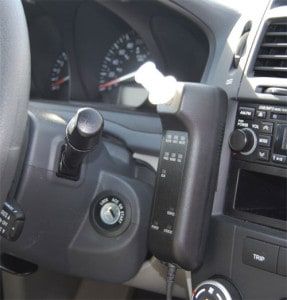 As it kicked off its Drive Sober or Get Pulled Over holiday campaign, which ran from December 13 through January 1, the National Highway Traffic Safety Administration (NHTSA) also took the opportunity to deter drunk driving beyond the holiday season by simultaneously releasing a “Model Guideline for State Ignition Interlock Programs.”
As it kicked off its Drive Sober or Get Pulled Over holiday campaign, which ran from December 13 through January 1, the National Highway Traffic Safety Administration (NHTSA) also took the opportunity to deter drunk driving beyond the holiday season by simultaneously releasing a “Model Guideline for State Ignition Interlock Programs.”
Designed to help states create and implement an effective ignition interlock program, the guideline first and foremost encourages all states to enact all-offender interlock laws. While all 50 states have some form of interlock law, only 20 states require the device for all convicted drunk drivers.
NHTSA Administrator David Strickland explains that requiring the device for all convicted drunk drivers will significantly protect motorists while ensuring that offenders don’t repeat their mistakes. According to the NHTSA, Arizona, Oregon, and other states with all-offender interlock laws have seen a decrease in DUI-related deaths by at least 30% while convicted drunk drivers who install the device are 75% less likely to repeat the offense compared to those who don’t install the device.
Mothers Against Drunk Driving (MADD) further reports that the average drunk driver has driven while impaired about 80 times before his or her first arrest, revealing that first-time offenders are just as dangerous as repeat offenders.
The guideline focuses on legislation, education, program administration, implementation, and other key interlock program features to maximize effectiveness. Featured guidelines include:
- Requiring interlocks for all convicted drunk drivers, including first-time offenders, as a condition of license reinstatement.
- Removing options and loopholes that allow offenders to avoid participation.
- Providing interlock users and all professionals involved in the program and its implementation with in-depth education of ignition interlocks and the state’s program.
- Establishing administrative rules and regulations with all parties and agencies involved in the state’s interlock program as well as procedures for monitoring offenders.
- Providing accurate and reliable devices through an effective approval process and requiring all devices to meet or exceed the NHTSA’s model specifications.
For more guidelines, please view the full “Model Guideline for State Ignition Interlock Programs.”
